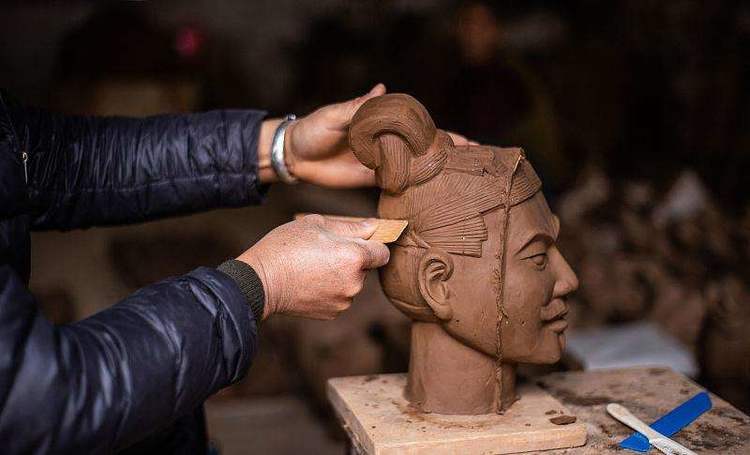
# Did the Terracotta Army Need to Be Fired?
While we typically associate firing with ceramic objects, the Terracotta Army figures present a fascinating case. These impressive sculptures were not fired in the traditional sense that we apply to pottery or porcelain. Let's delve into the reasons behind this.
## Terracotta: A Unique Material
Terracotta, meaning "baked earth" in Italian, is a clay-based ceramic. Unlike porcelain, which requires high firing temperatures to vitrify (become non-porous), terracotta remains porous even after firing. This porosity was actually beneficial in the creation of the Terracotta Army.
## The Process: Shaping and Sun-Drying
The creation of each soldier began with the sculpting of individual body parts using locally sourced clay. These parts were then assembled, and any seams were smoothed out to create a cohesive figure.
Crucially, instead of a kiln, the figures were left to dry naturally in the sun. This process, while lengthy, allowed the clay to harden gradually and evenly, minimizing the risk of cracking that could occur with rapid heating.
## Why Not Fire?
- Scale and Logistics: Firing thousands of life-sized figures would have been a monumental task. Constructing kilns large enough and producing the necessary fuel would have been a logistical nightmare.
- Structural Integrity: Firing terracotta to higher temperatures can make it brittle. Given the size and weight of the figures, maintaining structural integrity was paramount. Sun-drying provided sufficient strength while preserving a degree of flexibility.
- Aesthetics and Preservation: The natural, unglazed finish of sun-dried terracotta complements the realism of the figures. Additionally, the porous nature of the material allows it to breathe, which has contributed to their remarkable preservation over centuries.
## Color and Detail: Beyond Firing
While not fired in the traditional sense, the Terracotta Army figures were originally adorned with vibrant colors, applied as pigments bound with a lacquer-like substance. This paint layer, sadly lost to time and exposure, further highlights that firing was not essential for their aesthetic impact.
## FAQs
Q: What would have happened if the Terracotta Army figures were fired?
A: Firing to higher temperatures could have led to warping or cracking due to their size. The figures may also have become too brittle, making them susceptible to damage over time.
Q: Would firing have improved their durability?
A: While firing can increase the hardness of terracotta, the natural drying process, combined with the protective shelter built over the army, provided sufficient durability for their intended purpose.
Q: Are there any examples of fired terracotta figures from ancient China?
A: Yes, smaller-scale terracotta figures and objects were often fired in kilns. The decision to sun-dry the Terracotta Army was likely driven by practical considerations related to their unprecedented size and quantity.